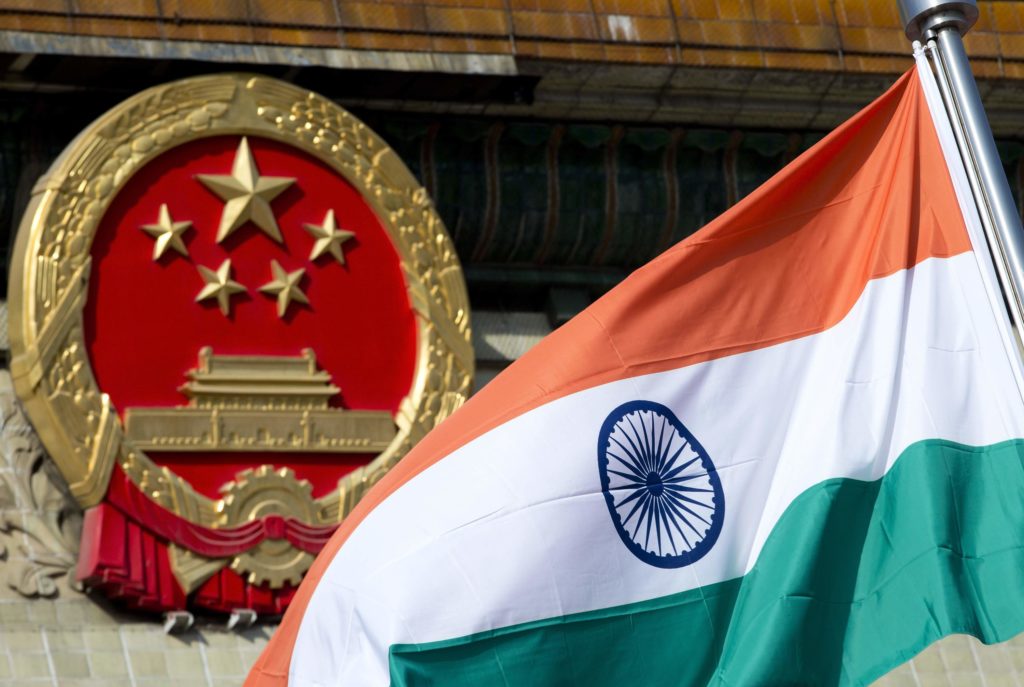Can the tiger tame the dragon?
Can India afford an economic boycott of China in view of the current stalemate in Doklam?
For three decades, India and China have been locked in their most serious military face-off at Doklam. While the political leadership in both countries have been silent over the stalemate, a trade war is brewing between the two neighbours and has gained popular support in India.
In recent months, India has imposed anti-dumping duties on many products coming in from China. “Anti-dumping duty is in force on 93 products imported from China,” Nirmala Sitharaman, commerce minister, told the Indian Parliament.
These products include chemicals, machinery, steel, metals, fibres, yarn, rubber, plastic, electrical items, and electronics and consumer goods. She said 40 cases related to imports from China have been initiated by the Directorate General of Anti-Dumping and Allied Duties (DGAD).
Indian power firms have been lobbying against Chinese businesses on three counts – cheap imports, security concerns and lack of access to Chinese markets.
However, the importance of Chinese imports in Indian economic development cannot be wished away. A critical infrastructure sector, where India is dependent on Chinese imports is that of power. In the 12th Five Year Plan alone 30 pc of equipments for capacity generation were imported from China.
Chinese firms, such as Harbin Electric, Dongfang Electronics, Shanghai Electric and Sifang Automation supply equipment or manage power distribution networks in over a dozen Indian cities. Similarly, Chinese companies dominate the telecom sector in India. Of late, India has introduced stringent measures to tighten the entry of Chinese businesses into India.
Ministry of Electronics and Information Technology has asked 21 smartphone-makers, most of them Chinese, to provide details about the ‘safety and security practices, architecture frameworks, guidelines, standards, etc. followed in your product and services in the country’.
Chinese vendors, such as Xiaomi, Lenovo, Oppo, Vivo and Gionee account for over half of India’s USD 10 billion smartphone market. The letter was also sent to Apple, Samsung Electronics, and local maker, Micromax.
Meanwhile, it is widely reported that India’s Central Electricity Authority (CEA) is tightening rules for firms bidding for power transmission contracts. The new rules say companies looking to invest in India should have been operating there for at least 10 years; have Indian citizens as top executives, and employees of the foreign firm should have lived in India for a certain period.
According to local industries, these new rules could tilt the balance in their favour.
India has also raised objections to China’s Shanghai Fosun Pharmaceutical Group’s proposed USD 1.3 billion takeover of Indian drug maker, Gland Pharma.
Will this affect China or have any impact at all? What if Beijing plans to retaliate? Can India afford to fight a trade war with China at this juncture?
India’s trade deficit with China rose to USD 46.56 billion last year. China’s exports to India totalled USD 58.33 billion, registering a meagre increase of 0.2 pc compared to USD 58.25 billion in 2015. India’s exports to China dropped 12 pc from 2015 to USD 11.76 billion.
China’s exports to India account for only two per cent of its total exports. If India were to boycott all the Chinese goods imported, will it dent the Chinese economy?
Satish Kumar, national president of the Swadesh Jagran Manch, an affiliate of the Rashtriya Swayemsevak Sangh, the ideological mentor of the ruling Bharatiya Janata Party, has been running a campaign asking Indians not to buy Chinese goods, so as to protect local industry and reset a trade deficit of more than USD 51 billion.
Concern over a broadening trade imbalance with China is not new. Policy-makers in India are well aware of the repercussions if China chooses to reciprocate.
Also, in light of the Chinese ‘One Belt One Road (OBOR)’ initiative aimed at gaining significant control in the export markets, India needs to aggressively explore the untapped markets and should reach them.
Along with that, India is revising the export basket to China. Raw materials, such as cotton, iron ore and copper formed the core of Indian exports to China. Now, exporters are trying to shift priorities towards value-added products.
Sitharaman had observed that the export focus should shift away from raw materials. Hardware, electronics, pharmaceuticals, textiles and automobile components have been identified for exports.
Next month will mark the third anniversary of India signing an agreement for achieving bilateral trade balance by 2019. This agreement has been more of a non-starter.
The agreement had sought the easing of restrictions against export items, such as bovine meat, fruit and vegetables, and basmati rice. Of these, only basmati rice has seen a breakthrough with 14 firms being allowed to export to China last year.
It is time to engage China more productively rather than trading in allegations.










